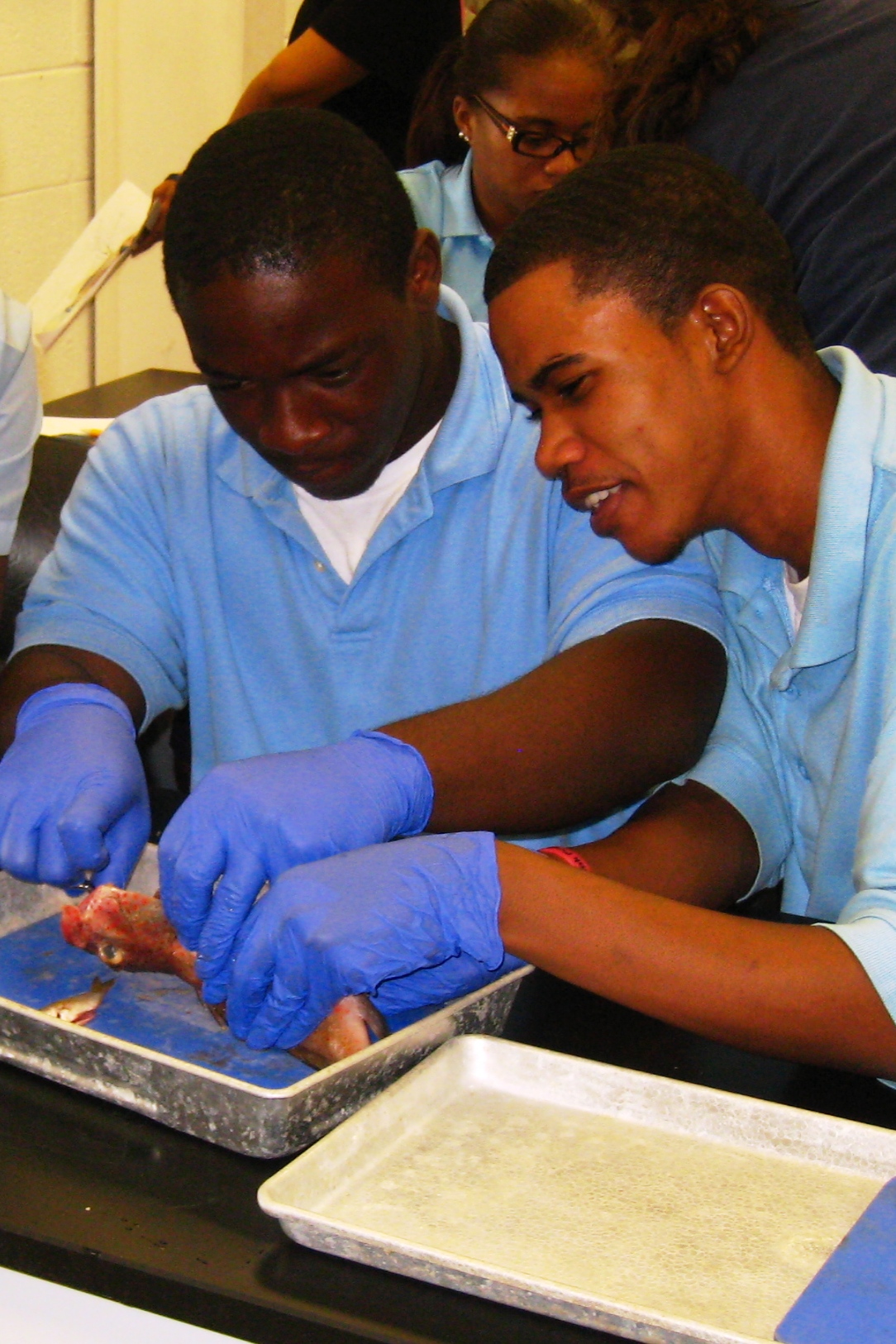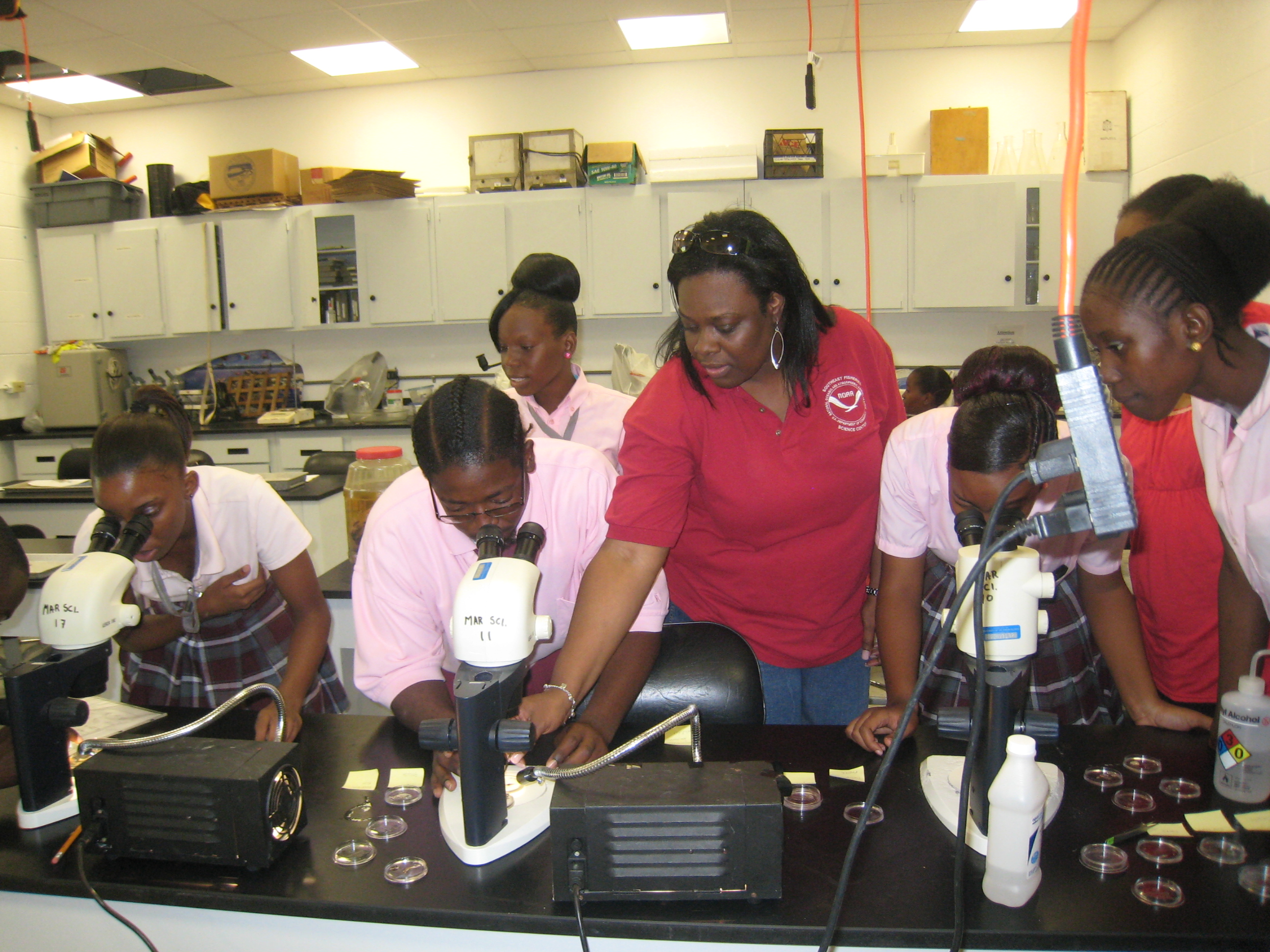
For scientist Trika L. Gerard, the presenter of lectures on St. Thomas and St. Croix, the passion for fish study was born in a marine biology lab.
That’s where she took students from four V.I. public schools (St. Croix Educational Complex, and St. Croix Central, Charlotte Amalie, and Ivanna Eudora Kean high schools) over the course of four days last week.
Gerard has spent the past 10 years looking at larval fish to help government officials understand how to best protect fisheries.
And while most of her current work as an engineering manager with NOAA (National Oceanic and Atmospheric Administration) keeps her busy in the lab and in the coral reefs off Florida, Gerard said she still finds time to share her work with students.
Gerard said her interest in biology led her to the research world after graduating from Charlotte Amalie in 1991. As a college student, she took part in an educational partnership program sponsored by NOAA. She said that experience nurtured an interest in fisheries; it also led to graduate school and a doctorate in fisheries management.
VI-EPSCoR
The December series of field trips and lab lessons led by Gerard were made possible through a federally funded program, the V.I. Experimental Program to Stimulate Competitive Research (VI-EPSCoR).
One of the program’s goals is to increase student interest in the sciences and promote science-based careers. Through VI-EPSCoR’S Celebrity Scientist Tour, students meet professionals like Gerard. Over the past year they have also met David Guggenheim, known as the Ocean Doctor, and physicist Deborah Berebichez.
Participating students were expected to collect fish samples using nets along the shore. Whatever they caught would be brought into the lab for further study. CAHS science teacher Vernon Callwood said his students had begged for a field trip throughout the fall semester.
The students came equipped with backpacks, a change of clothes and lunch. Not meeting with much success with the other groups catching their own, Gerard and her lab assistants brought fish in early Tuesday, before the class began.
Callwood said there was more to learn from Gerard in the lab at UVI’s MacLean Marine Science Center than he could offer students in the classroom. He also said teaching fish biology made it practical for students because fish are found in their surroundings.

In the marine science lab last week Gerard and NOAA Research Associate Estrella Malca helped students understand fish anatomy.
They took them on a microscopic tour of tiny larval fish and showed them how tricky it is for a novice to identify them, compared to more easily recognize adult fish.
It was then time to find the otoliths, or ear bones, of the fish.
For Gerard, it was the heart of the lecture.
For Eudora Kean 11th-grader Nefertiri Callwood, it was a total surprise.
“Fish have ear bones?” she said.
Some of the CAHS students in the Tuesday class said they didn’t know fish had ears at all. After class, Malca explained fish have six senses.
Dissection of the fish head produced something that looked like a fingernail. Gerard explained the otolith gives a fish the ability to find food and sense danger. Some fish, like grunts, use hearing to communicate.
Gerard then added another bit of information: A fish’s ear bone is like the trunk of a tree. With every year of life it gains a ring. Because the bones are small, the rings can be seen under a microscope. Microscopic examination can tell a fish’s age. It can also show what kind of waters the fish was swimming in and where it grew up.
The group then left the lab and returned to a classroom to review what they had learned.
After his Monday field study, Eudora Kean senior Harry Sanguillen found he had something to smile about.
“I learned a lot of words I cannot even pronounce,” he said.
“Today was a good day. We got to dissect fish … [see] how experiments are conducted, and we got to see the results of the experiments.”





